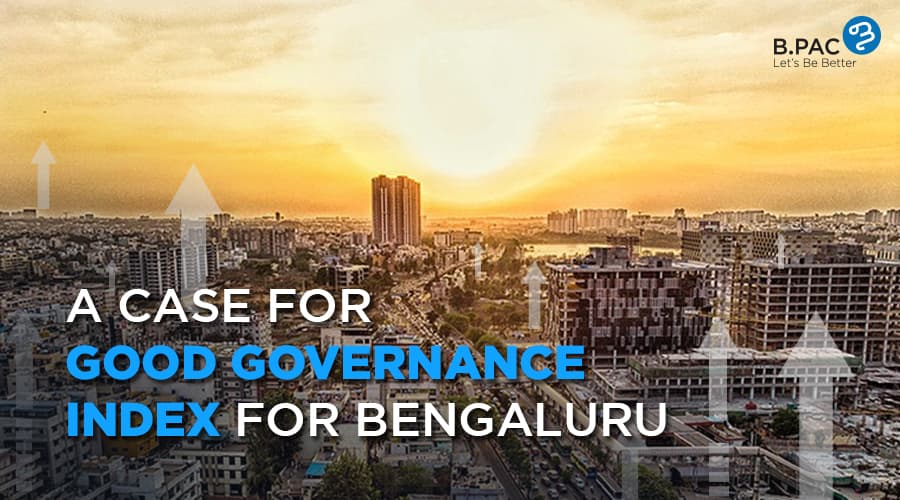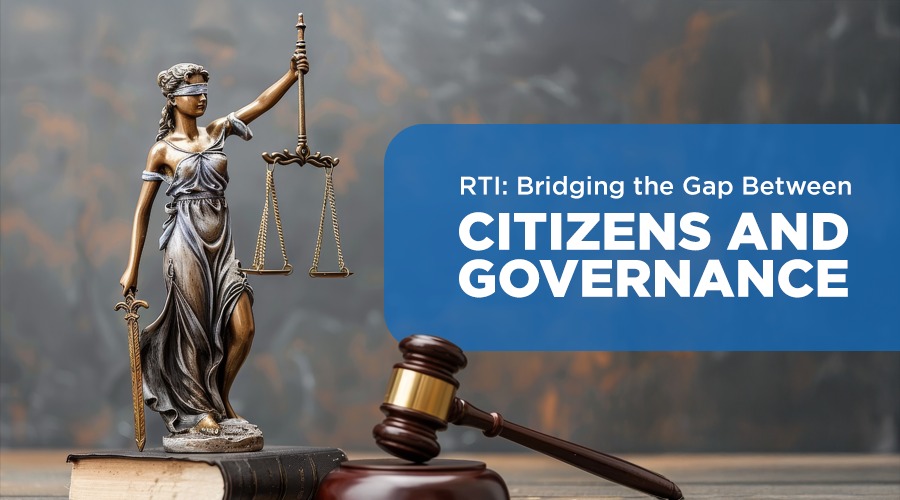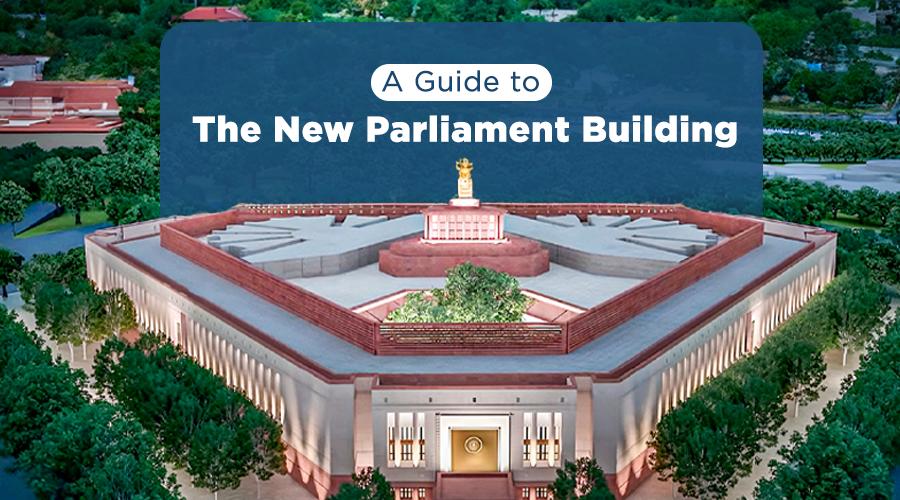India’s economic growth story will be written by urban cities. Over 70% of India’s GDP and new jobs are expected to come from cities by 2030. And Bengaluru is at the forefront of this growth. According to Oxford Economics, the city will top Indian cities in terms of GDP in 2035 touching $283 billion by that year. While the economic prospectus looks good for the city, the question is if Bengaluru is poised to handle the urban expansion.
Led by the IT sector, Bengaluru became a hub for economic opportunities with the turn of the century. This was naturally followed by large scale migration and rapid urbanization. Unfortunately, the political representatives and administrators failed to keep in pace with the speed of the urbanization. The lack of foresight and lack of focus towards urban planning led to deterioration of living conditions of Bengaluru citizens. A city earlier called the ‘Garden City’ has now become synonymous for inadequate infrastructure, traffic snarls, rising pollution levels, vanishing lakes, water stress, urban flooding and so on. These issues, if left unaddressed and absence of a proactive approach for governing the city, will impede its economic growth potential. Given the situation, the need of the hour is an inclusive and sustainable development plan for the city. This plan, when managed and implemented by the Bruhat Bengaluru Mahanagara Palike (BBMP) has the ability to ensure that the city’s economic growth and development go hand in hand.
Why BBMP? BBMP is the key agent in impacting development outcomes in the city. As a third tier of governance, its functioning directly determines the governance of the city. According to the twelfth schedule of the Constitution, urban planning and supply of several public amenities is the function of municipalities. This power has been developed through the BBMP Act, 2020. However, multiplicity of institutions, financial constraints, political reasons, etc. have limited governing space for BBMP, impacting the quality of governance and development of the city. The transfer of accountability between institutions and deterioration of the city on several fronts has reduced public trust in the institution, creating a governance gap. There is an immediate need to close the gap to sustain the opportunities and development of Bengaluru.
A GOVERNANCE INDEX TO BRIDGE THE GOVERNANCE GAP
Good Governance Day, 2022 coinciding with thirty years of the 74th Constitutional Amendment Act provides an opportune moment for pushing good governance practices within BBMP. Reports of the Administrative Reforms Commission, NITI Aayog have suggested the actions that are required to ensure good governance. But there exists no system to measure to what extent they are being implemented or a yardstick to measure it. Absence of accountability leads to lack of enforcement. Thus, the Good Governance Index (GGI) has been suggested as a measure for better enforcement of good governance in BBMP.
Capabilities of government institutions and systems are important for impactful policymaking and service delivery. An index being data driven provides governments with information on their present capabilities and an opportunity to improve. It also brings awareness amongst citizens about governance practices and empower them to hold governments accountable. A Good Governance Index was introduced by the Government of India, laying importance on good governance as the key component of the economic transformation. Taking a cue from the same a GGI has been suggested for the governing entity of Bengaluru, BBMP. The critical economic juncture that Bengaluru is at and the lackluster effort by the BBMP to push for good governance of the city makes a stronger case for a GGI specific to the city governance.
Further an index specific to functioning of BBMP will aid them in their approach to policy making and governance specific to the city. The index is also a step towards strengthening the grassroot democratic government whose power is being usurped by the State Government. The index brings transparency about how the city is being governed, thus allowing citizens and other vital stakeholders to have deeper insights into the functioning of their local governments and to hold them accountable. This encourages participatory democracy. Overall, a GGI for Bengaluru provides dual advantage of strengthening the BBMP and ensuring sustainable economic development of the city. Thus, making a strong case for GGI has a means to close the governance gap.
FRAMEWORK FOR A BENGALURU SPECIFIC GGI:
Evaluating, analyzing and monitoring performance of the city administration requires a framework which is distinct to its powers and functions. Thus, the framework for this index has been developed with the intention to seek accountability of the functioning of BBMP in accordance with the legislation governing it, BBMP Act, 2020. The indicators also reflect the objective of 74th Constitutional Amendment Act, 1992 as a step towards strengthening urban local body’s governing structure. Based on the above considerations, the suggested BBMP’s GGI is divided into four key themes, Institutional Strength, Services, Citizen Centric Governance and Finances expanding across 22 sub themes and 58 indicators. The themes and indicators are as follows:
1.Institutional Strength:
The effective functioning of a government institution is based on its organizational structure and their powers. In the case of BBMP, the role played by those in leadership positions, i.e elected corporators, bureaucrats gains extreme importance. They play a significant role in analyzing the information and drawing out plans and policies accordingly and implementing them. Their actions determine the public trust in BBMP.
To measure the same, six sub themes are proposed. These evaluate the independence and strength of those in leadership positions in the municipal corporation and BBMP as a whole. In addition, their ability and efforts towards a planned urbanization. This is important as Bengaluru’s population is expected to double to 2.5 crore by 2031. The present pace of urbanization and rising challenges due to climate change will wreak havoc for the city in the absence of a strong leadership with the vision of a sustainable plan and it’s efficient implementation.
The sub themes under institutional strength are:
- Leadership
- Planning
- Plan Implementation
- Plan Enforcement
- Devolution of power in accordance to Schedule 12
- Establishment of departments to perform the functions/ Coordination between agencies
2.Services:
Service delivery is the primary responsibility of urban local bodies. Accordingly, BBMP has been entrusted with certain functions under First Schedule of the 2020 Act. These are related to urban development and social justice at the city level. Under this theme, eight important functions which are essential to balance urbanization with development are chosen as sub themes. These eight sub themes, further divided into 25 indicators, focus on areas that are at the core in building an inclusive and healthy Bengaluru. Assessment of these indicators provide insight into quality of service delivery and responsiveness towards providing a good livelihood for all the citizens amidst rapid urbanization. It also empowers citizens to hold the BBMP accountable.
The eight sub- themes are:
- Public amenities
- Water
- Public Health
- Housing
- Solid Waste Management
- Environment Conservation
- Social Inclusion
- Heritage Management
An evaluation into these is important as BBMP does not perform most of these functions despite being mentioned in the Act. They are instead performed by parastatal agencies and institutions under the State government, weakening BBMP. Multiplicity of institutions and lack of coordination between these agencies have impacted efficient service delivery. The results of the index can push for some institutional reforms for better service delivery.
3.Citizen Centric Governance:
While the first and second theme evaluate the capability of BBMP to ensure good governance and performance of BBMP as a governing entity respectively, the third theme concentrates on citizen centric governance that lies at the foundation of good governance. Service delivery and citizen centric administration are interlinked. Transforming service delivery begins with understanding citizens’ needs and priorities. When governments deliver services based on the needs of the people they serve, they can increase public satisfaction and reduce cost.
The index through four sub-themes and thirteen indicators evaluates the efforts made by BBMP to increase transparency, accountability and citizen participation in governing Bengaluru. Working on this is essential to bridge the governance gap. It is all the more important because participatory democracy is a core principle of third tier governments as they are the closest government institution accessible to citizens.
The four sub themes of citizen centric governance are:
- Transparency, Accountability and Effectiveness
- Human Resources
- Participation
- Digital Governance
4.Finances:
Last but not the least, the fourth theme evaluates the financial status of BBMP. Financial health is crucial for a government to administer and provide services. However, urban local bodies across the country are financially weak with limited revenue sources. Further impeding their ability to provide quality urban infrastructure at a time when urbanization is occurring at a lightning speed. Naturally, cities fail to sustain economic opportunities and the public lose trust in the system.
The above situation also extends to BBMP. With property tax as the major revenue generator, it has become highly dependent on State and Central grants. But the increasing expenditure in governing the city has increased the debt of the Palike which is bound to increase further. There is a dire need to address this weak financial position to ensure that development of the city matches with the pace of urbanization. A step towards this is by holistically measuring all the components of the BBMP budget and addressing them by removing blockades and through innovation. Four sub themes have been suggested for the same. Assessment of these indicators and working to improve on them will bring financial sustainability and financial accountability into municipal finance.
The sub- themes are:
- Financial decentralization
- Revenue management
- Expenditure Management
- Fiscal Responsibility
An evaluation of the nine indicators will provide a deeper look into the issues pointed by RBI in their report on municipal finances and on ways to accept their recommendations to financially strengthen BBMP. A financially weak position will pose a risk to all practices which are essential for good governance of a rapidly expanding Bengaluru.
GGI- A STEP TOWARDS TRUE DECENTRALIZED GOVERNANCE
The time is ripe to establish a Good Governance Index for BBMP. The index, while analyzing the present functioning of the municipal corporation, can assist in drawing a roadmap for fast growing Bengaluru. The Ministry of Housing and Urban Affairs has taken the first step towards a data driven governance for India’s urban development by publishing the Municipal Performance Index, 2020. Taking inspiration from the same, a GGI has been proposed for Bengaluru. A more specific index will be in line with the economic geography of the city and its developmental issues and thus specific solutions. The index is also a tool to empower ward committees and area sabhas, who have the power to bring localized changes. Eventually increasing citizen participation in development of Bengaluru and reducing the role of BBMP to that planner and implementer.
Bengaluru is in dire need of quick and responsive actions to sustain its economic opportunities while ensuring good living conditions for its citizens. Topping Indian cities in terms of GDP can be an uphill task for Bengaluru in the absence of governing vision and climate change related challenges. Solution to this lies in good governance practices that BBMP has to undertake and a Good Governance Index which has the potential to push for reforms in the institution.





